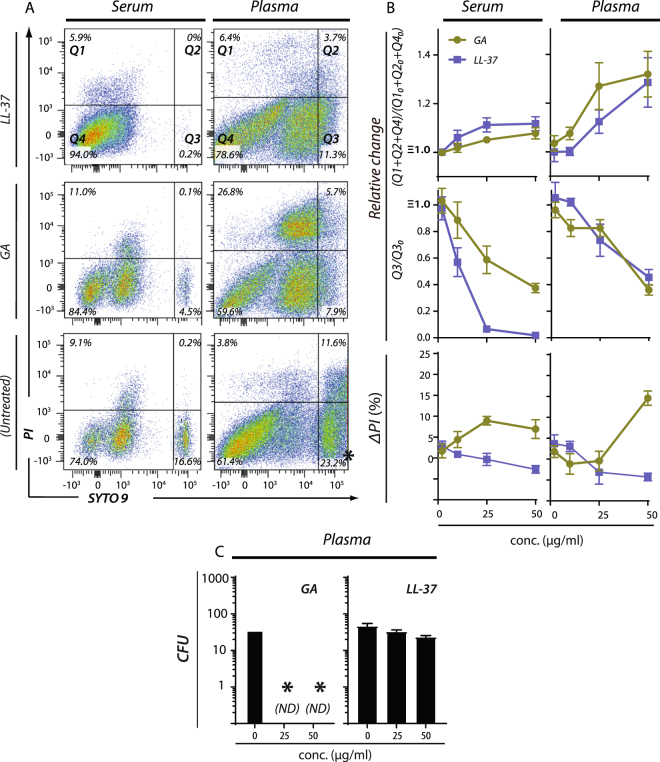Figure 5.
Flow cytometric analysis of antimicrobial activity for GA and LL-37 in human serum and plasma. (A) Bacterial isolates of P. aeruginosa (PAO1) were incubated with varying concentrations of LL-37 or GA or left untreated at 37 °C for 30 min either in plasma or serum. After exposure to GA or LL-37, bacterial cell samples were stained with a mixture of SYTO 9 and PI. (B) Plots of the change in events in Q1 + Q2 + Q4 or Q3 as a function of the applied concentration of antimicrobial (2–50 µg/ml) relative to untreated bacteria. The antimicrobial-induced change in percentage of PI-positive bacterial cells is shown as a function of the concentration GA or LL-37. For each concentration, the change (ΔPI) was calculated by subtracting the percentage of PI-positive cells in untreated from treated cells. The results shown represent average values of four independently generated sets of data. SEM are shown as error bars on the curves. (C) Antimicrobial effects of GA and LL-37 on P. aeruginosa (PAO1) in human plasma-containing buffer evaluated by CFU counts. P. aeruginosa was treated with 25 or 50 µg/ml LL-37 or GA in PBS with 50% (v/v) fresh human plasma, followed by plating and counting as above. (ND, not detected).

